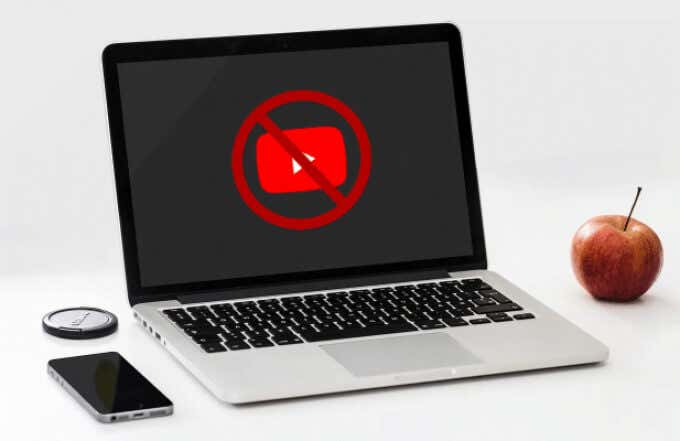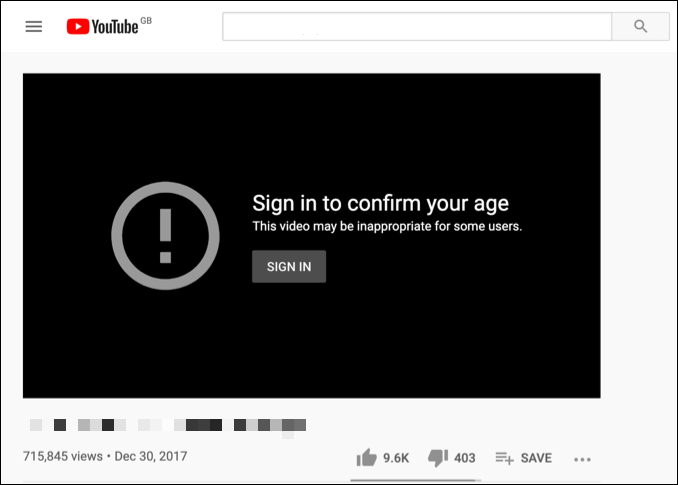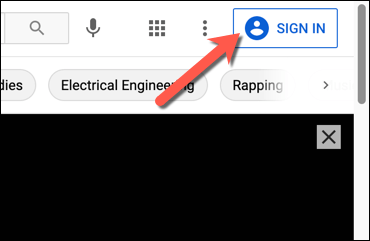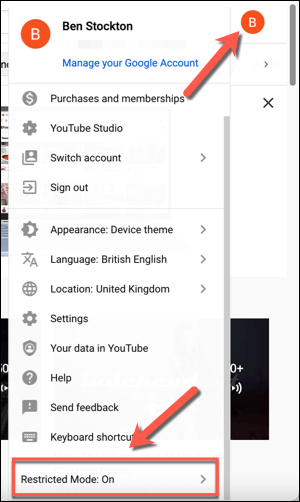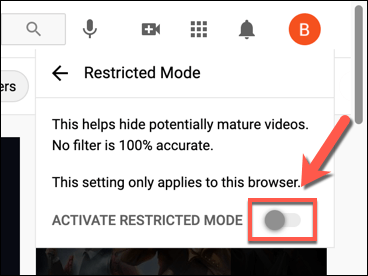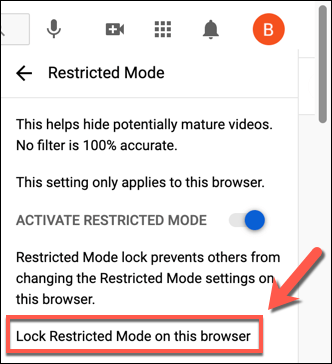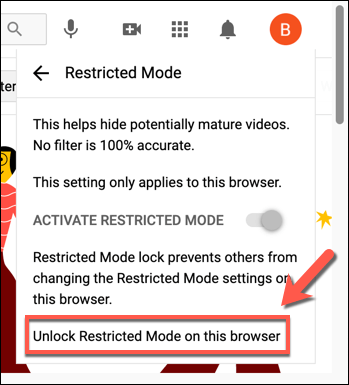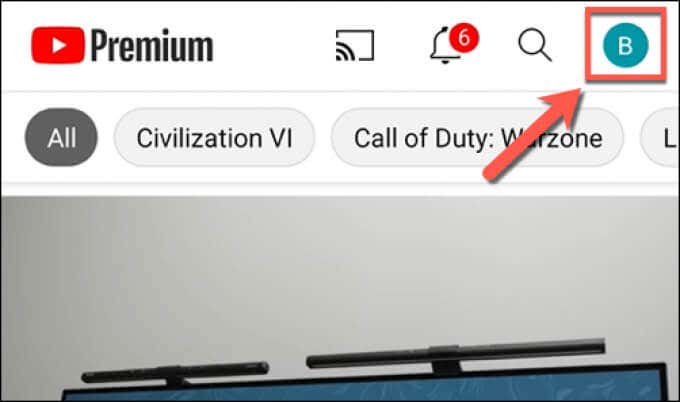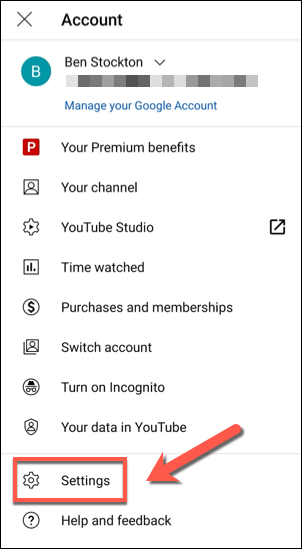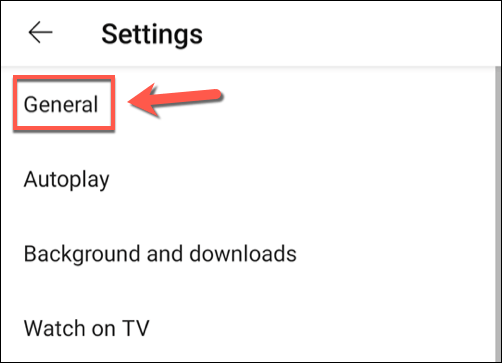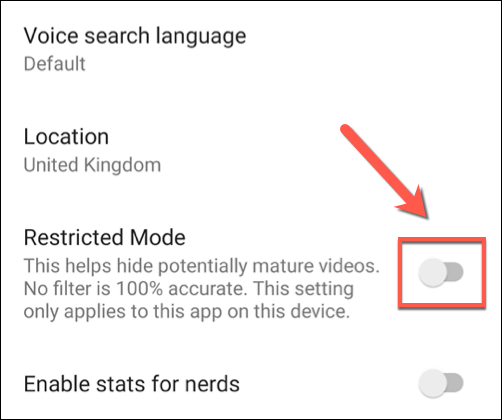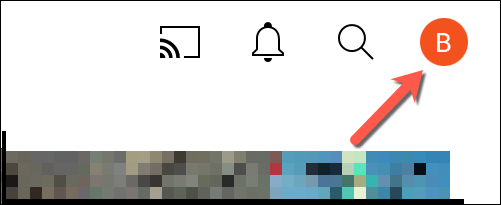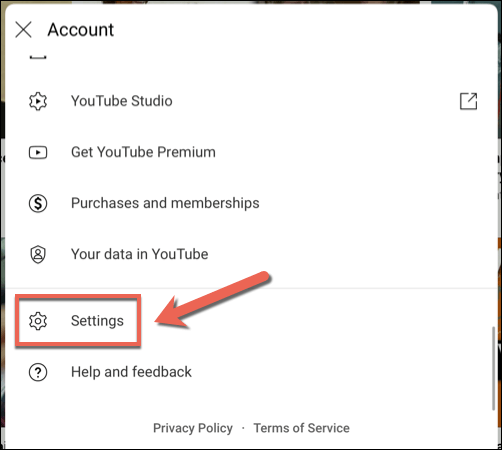YouTube is a platform with content for anyone and everyone to enjoy, but that doesn’t mean that every video on YouTube is safe to view. To help make the platform safer for children and teenagers to enjoy, YouTube restricts certain mature or potentially dangerous content so that only adults can view it.
This is YouTube’s Restricted Mode feature in action, allowing parents and network administrators to block YouTube videos and channels that contain potentially unsafe topics from view. Here’s everything you need to know about YouTube Restricted Mode, including how to enable or disable it on your account.
What is YouTube Restricted Mode?
To help you understand YouTube Restricted Mode, it’s important to learn a bit more about the type of content that Google permits on its platform.
When a YouTube channel is created, the creator has to make sure that the content they’re publishing meets certain guidelines, meaning that they’re safe for YouTube’s wider audience to view. This means that videos that contain sexual, hateful, or dangerous content, including bad language or adult themes, aren’t usually permitted.
Videos that break the YouTube community guidelines (as these rules are known) risk being demonetized, blocked, or deleted. These decisions are made through manual review or account-wide AI screening. Restricted Mode is applied even if the video isn’t bad enough to breach these guidelines, but still contains questionable content.
This limits the video’s audience to signed-in YouTube users who are old enough to view the content. Restricted videos typically won’t appear using the search tool, and could (following manual review) be deleted at a later date. If your account has Restricted Mode switched on, you won’t be able to view restricted videos like these.
This is a good (although not foolproof) parental control feature that helps to limit the exposure of dangerous or unsafe content to younger audiences. The feature is also useful in certain work or public settings, such as on a workplace PC, where viewing certain content may not be appropriate.
How to Enable or Disable YouTube Restricted Mode on PC or Mac
Restricted Mode is a safety feature you can only disable if you’re signed in with your Google account. You’ll need to be over 18 years old to disable this feature, as YouTube automatically restricts potentially unsafe content for underage users.
Along with blocking the video from view, it also blocks the user from viewing or adding comments to it. You can disable the feature in your Google account settings if you’re over 18. If you’re under 18, you won’t be able to disable Restricted Mode, as the feature is restricted based on your date of birth.
- To enable or disable YouTube Restricted Mode on a PC or Mac, open the YouTube website in your browser. If you’re not signed in already, select the Sign In button in the top right.
- Once you’ve signed in, return to the YouTube homepage if you’re not redirected automatically. Select your profile icon in the top right, then select Restricted Mode from the list.
- To quickly enable or disable YouTube Restricted Mode, select the Activate Restricted Mode slider. The slider will turn grey when the mode is deactivated and blue when it is activated. This will only temporarily activate (or deactivate) the mode in your open browser—you (and other users) can easily disable it by repeating these steps.
- If you want to enable Restricted Mode permanently in your current browser, select the slider to enable Restricted Mode, then select the Lock Restricted Mode on this browser link below it. This forces anyone using your current browser to provide your password to remove the lock in the future.
- You’ll need to sign in again at this point, so follow the on-screen instructions to do so, using your Google account’s username and password to authenticate. Once you’ve done so, Restricted Mode will remain enabled and locked in place with the slider grayed out, meaning you can’t change the setting. You can disable it by selecting your profile icon > Restricted Mode > Unlock restricted mode on this browser and authenticating with the correct account password.
The steps above should help you to enable or disable Restricted Mode in your browser, but the steps aren’t account-wide, and you’ll need to repeat the steps on other devices.
How to Enable or Disable YouTube Restricted Mode on Mobile Devices
If you’re using the YouTube app on Android, iPhone, or iPad devices, you’ll need to ensure that you’re signed in with the correct account before you proceed. The steps will vary depending on if you’re using an Android or Apple device.
On Android Devices
- On Android, open the YouTube app and select your profile icon in the top right.
- In the Account menu, select the Settings option.
- In the Settings menu, tap the General option.
- To enable or disable Restricted Mode, tap the Restricted Mode slider. If the slider is gray, the mode is disabled. If the slider is blue, the mode is enabled. The setting will only apply to your current device.
On iPhone or iPad Devices
- To enable or disable YouTube Restricted Mode on iPhone or iPad, open the YouTube app and sign in. Once you’ve signed in, select your profile icon in the top left.
- From there, select Settings to access the app settings menu.
- In the Settings menu, select the slider next to the Restricted Mode option to enable or disable the feature. If the slider turns gray, Restricted Mode is disabled on your device (but no other devices), while a blue slider means Restricted Mode is enabled.
Protecting Yourself on YouTube
Even if you enable YouTube Restricted Mode, it isn’t a perfect solution, and some unsafe videos may fall through the gaps. If that’s the case, you may need to strongly consider some YouTube alternatives that offer better protection, especially if you’re worried about children and teenagers viewing unsafe content.
There are plenty of YouTube tips and shortcuts you can try to make better use of the platform if you’re an adult, however. If you want to ditch the ads, you should consider a YouTube Premium subscription (as long as YouTube is working properly). If you’re having trouble, don’t forget that you can delete your YouTube account completely.
